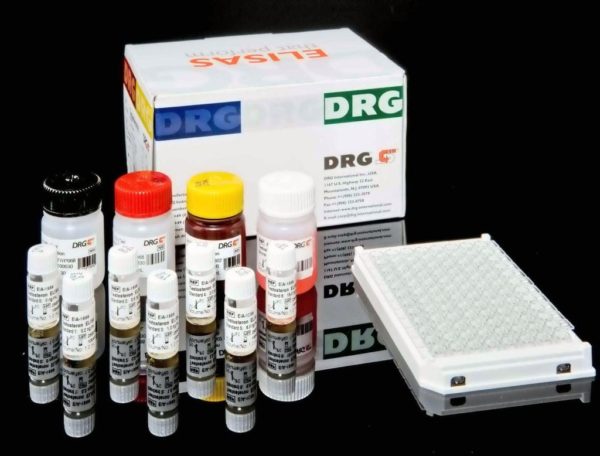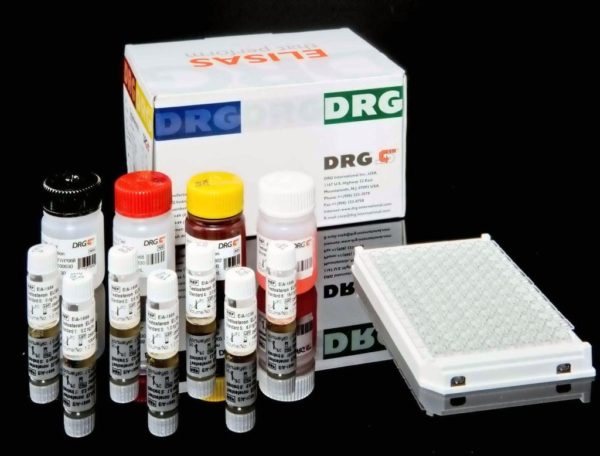Description
An enzymatic assay for the quantitative measurement of L-phenylalanine in newborn blood spots (for neonatal screening of Phenylketonuria).
Phenylketonuria (PKU) is one of the most often heriditary diseases of the metabolism of the amino acids. It is transmitted autosomal recessive to the descendant with an incidence of circa 1:2600 to 1:25000 dependent on the observed population group. The main cause of the disease – 90 to 99 % of all cases – is a decrease or the absence of the activity of the
enzyme complex Phenylalaninehydroxylase which is responsible for the transformation of the essential amino acid Phenylalanine into Tyrosine. The latter is a precursor of the Catecholamines, Melanine and the thyroid hormones. Because of the blocking of this metabolism Phenylalanine is transformed by an alternative pathway to Phenylpyruvate and Ðacetate which are excreted by the kidneys. The disease becomes apparent by a mental retardation of the patients beginning in the first weeks of their life. Responsible for this development is the improper myelinization of the neurons in the brain because of the change in the protein metabolism. Other signs of the Phenylketonuria are the lacking of pigmentation of the dermis and its adnexis because of the disturbance of the synthesis of Melanine and therefore its predisposition of skin diseases. It is important to make the diagnosis of Phenylketonuria in the newborns because the cerebral damage can be prevented by a low Phenylalanine diet. Therefore a screening test for the detection of elevated Phenylalanine concentrations in the blood has to be made between the 3rd and the 5th day of the infants life. If this one is positive it is followed by a confirmatory assay to detect the special mutations on the chromosome 12. Many screening tests were developed for monitoring patients for Phenylketonuria. The first one called to its inventor Guthrie is based on the neutralization of a growth inhibiting factor of Bacillus subtilis by high Phenylalanine levels. Because of some disadvantages of this method it is replaced by assays in which the Phenylalanine in the blood of the patients takes part in a chemical reaction developing a fluorescinating or a coloured substance which can be measured quantitatively. The procedures can be used more conveniently in comparison to the more sophisticated and more expensive method of the HPLC.
The Phenylalanine of the blood spots is eluated quantitavely using Trichloracetic acid (3 %) from the cellulose paper. After that the Phenylalanine is transformed by the enzyme Phenylalaninedehydrogenase to Phenylpyruvate. This reaction is coupled to the reduction of the coenzyme NAD+, present in the reaction mixture. The reduced NADH transforms in a redox reaction the added Tetrazolium salt to the yellow substrate Formazane. The amount of Formazane developed is proportional to the concentration of Phenylalanine in the sample. The color of the substrate can be measured with a photometer at 450 nm.




